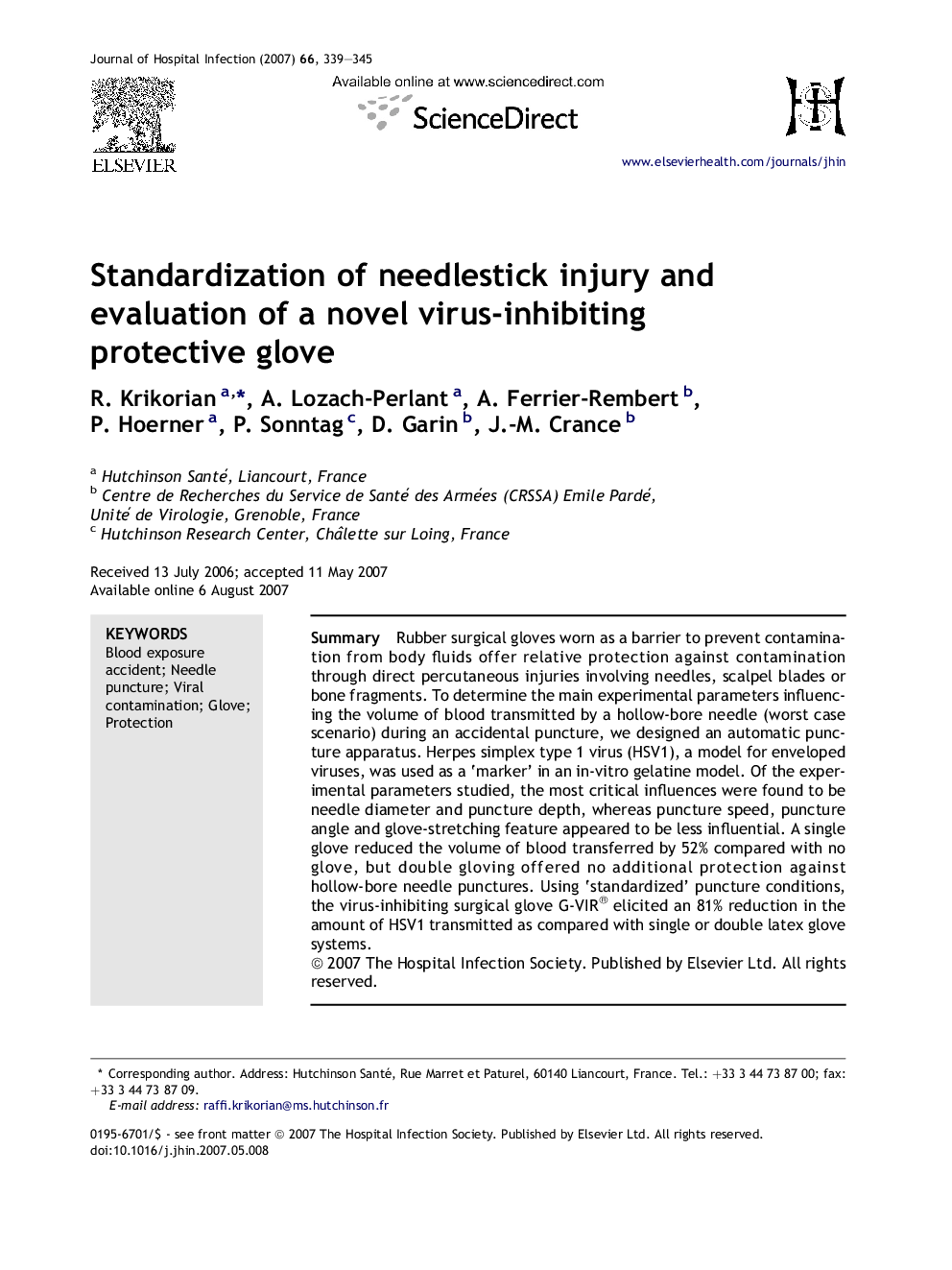| Article ID | Journal | Published Year | Pages | File Type |
|---|---|---|---|---|
| 3373489 | Journal of Hospital Infection | 2007 | 7 Pages |
SummaryRubber surgical gloves worn as a barrier to prevent contamination from body fluids offer relative protection against contamination through direct percutaneous injuries involving needles, scalpel blades or bone fragments. To determine the main experimental parameters influencing the volume of blood transmitted by a hollow-bore needle (worst case scenario) during an accidental puncture, we designed an automatic puncture apparatus. Herpes simplex type 1 virus (HSV1), a model for enveloped viruses, was used as a ‘marker’ in an in-vitro gelatine model. Of the experimental parameters studied, the most critical influences were found to be needle diameter and puncture depth, whereas puncture speed, puncture angle and glove-stretching feature appeared to be less influential. A single glove reduced the volume of blood transferred by 52% compared with no glove, but double gloving offered no additional protection against hollow-bore needle punctures. Using ‘standardized’ puncture conditions, the virus-inhibiting surgical glove G-VIR® elicited an 81% reduction in the amount of HSV1 transmitted as compared with single or double latex glove systems.
